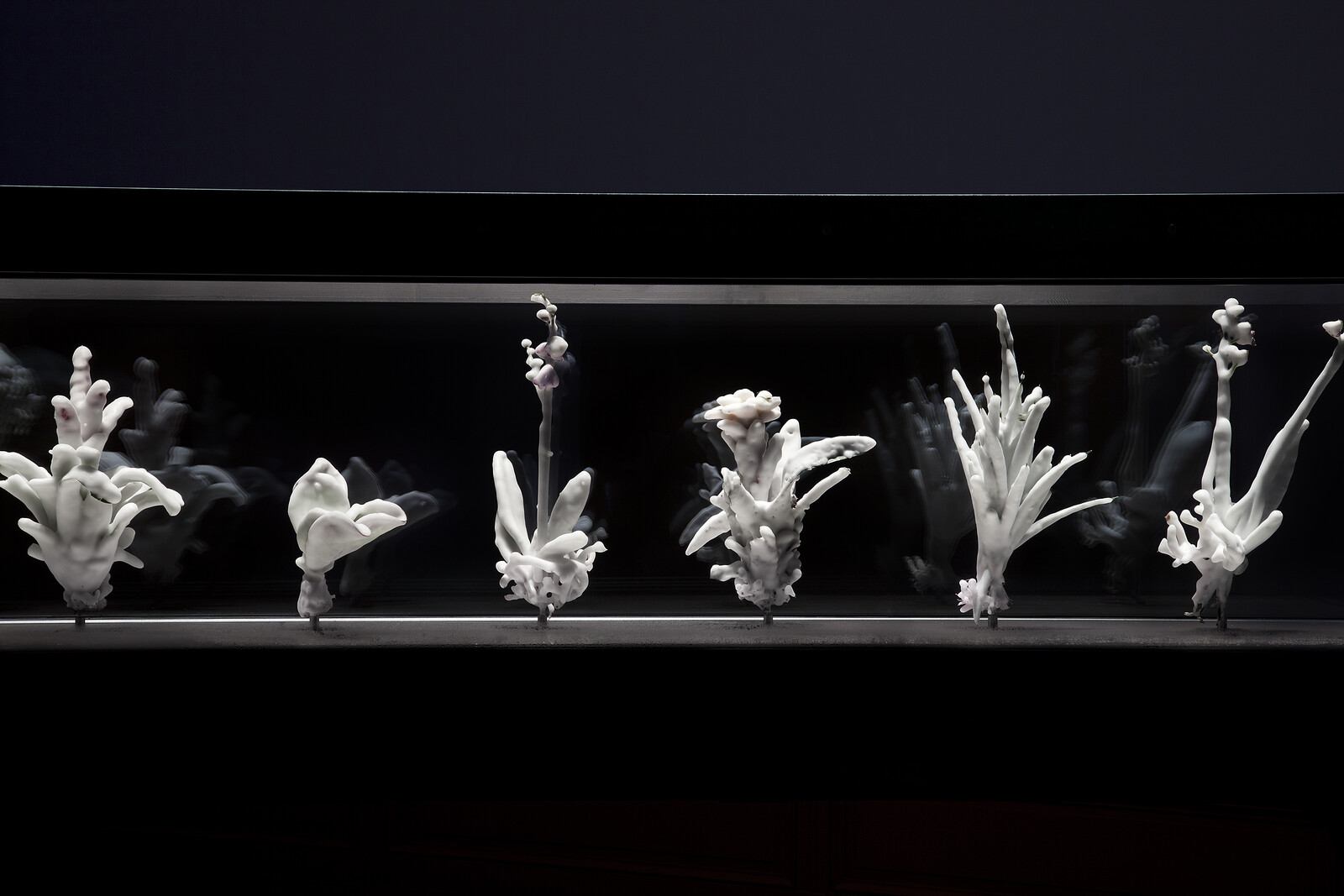March 31–July 30, 2017
Am Zollhafen 3-5
55118 Mainz
Germany
Hours: Wednesday–Sunday 10am–5pm
T +49 6131 126936
mail@kunsthalle-mainz.de
Baggenstos/Rudolf & Hackteria, Julian Charrière, David Claerbout, Daiga Grantina, Dominique Koch, Elodie Pong, Daniel Steegmann Mangrané, Monica Studer/Christoph van den Berg, Phillip Zach
Today, in the Anthropocene era, human beings have become the determining factor in evolution. According to the Mainz-based atmospheric chemist and Nobel prizewinner Paul J. Crutzen, for thousands of years humanity was forced to stand its ground against the primacy of nature, but this relationship was turned on its head at the very latest with the advent of industrialisation. This exhibition presents a generation of artists who, mindful of the way in which people are controlling and threatening nature, are on a quest for alternatives to the evolutionary dead end.
In their desire to distill essences and construct models which can serve as potential counter-concepts, or at least approaches for changing the way we think, the artists have made their way to the most distant corners of the earth, parts of nature that have hitherto been virtually unexplored. From the last-remaining sanctuaries of the jungle and the depths of the ocean, they have devised computerised simulations, biological experiments, and futuristic biofictions. They have chased down the paradox of an untouched nature created by humankind, mixing philosophically critical and animistic thought with elements taken from the life-sciences, bio-engineering, and geo-engineering. At the same time, the artists have utilised state-of-the-art technologies for creating images and editing material. By means of virtual reality, computer animation, and 3D printing they have generated pictures that range from enchantingly beautiful to confusingly hyperreal. The works oscillate between post-apocalyptic scenarios and alternative eco-visions, between poetically abstract representations and utterly tangible DIY ideas. And although people are nowhere to be seen in the exhibition, the hand of human construction is recognisable in all the works. Something that at first glance might appear natural and unadulterated is actually always literally (hu)man-made. The artists are walking on a tightrope between alternative visions and the dysfunctional dynamics that inevitably loom when people meddle irrevocably in natural processes. This is connected to criticism of the anthropocentric and profit-driven concept of society that sees nature as a resource to be exploited rather than an end in itself. Ultimately, the exhibition is scrutinising humanity’s understanding of itself as a species. Yet in their search for perspectives which seamlessly incorporate ecological and technological developments, the works sound out the current dilemma about the future, which fluctuates between carefully preserving the fragile coexistence of people and nature on the one hand, and radical measures concerning apocalyptic dynamics on the other. Balancing these could ultimately even destabilise human control, creating space for a post-humanist era where nature and technology join forces against humankind. In these speculative scenarios about the future, the dualisms of nature and technology, fact and fiction, and optimism and pessimism cannot be easily separated.
Curated by Sabine Rusterholz Petko, art historian and freelance curator, Zurich
Related programmes
April 5, 7:30pm
Das Neustadtkino at Kunsthalle Mainz
April 26, 7pm
Lecture by Daniel Falb, poet and philosopher, Berlin
April 29, 11am–5pm
Workshop with Baggenstos/Rudolf & Urs Gaudenz (GaudiLab & Hackteria)
June 10, 11am–12pm
Museum Night Mainz
June 28, 6pm
Guided tour with Dr. Bernd Herkner, Senckenberg Museum Frankfurt, and Sabine Rusterholz Petko
Fade into You: a series of film screenings
May 17, 7pm
The Otolith Group, Hydra Decapita, 2010
(with kind support of LUX, London)
July 19, 7pm
Ursula Biemann, Deep Weather, 2013 and Subatlantic, 2015

